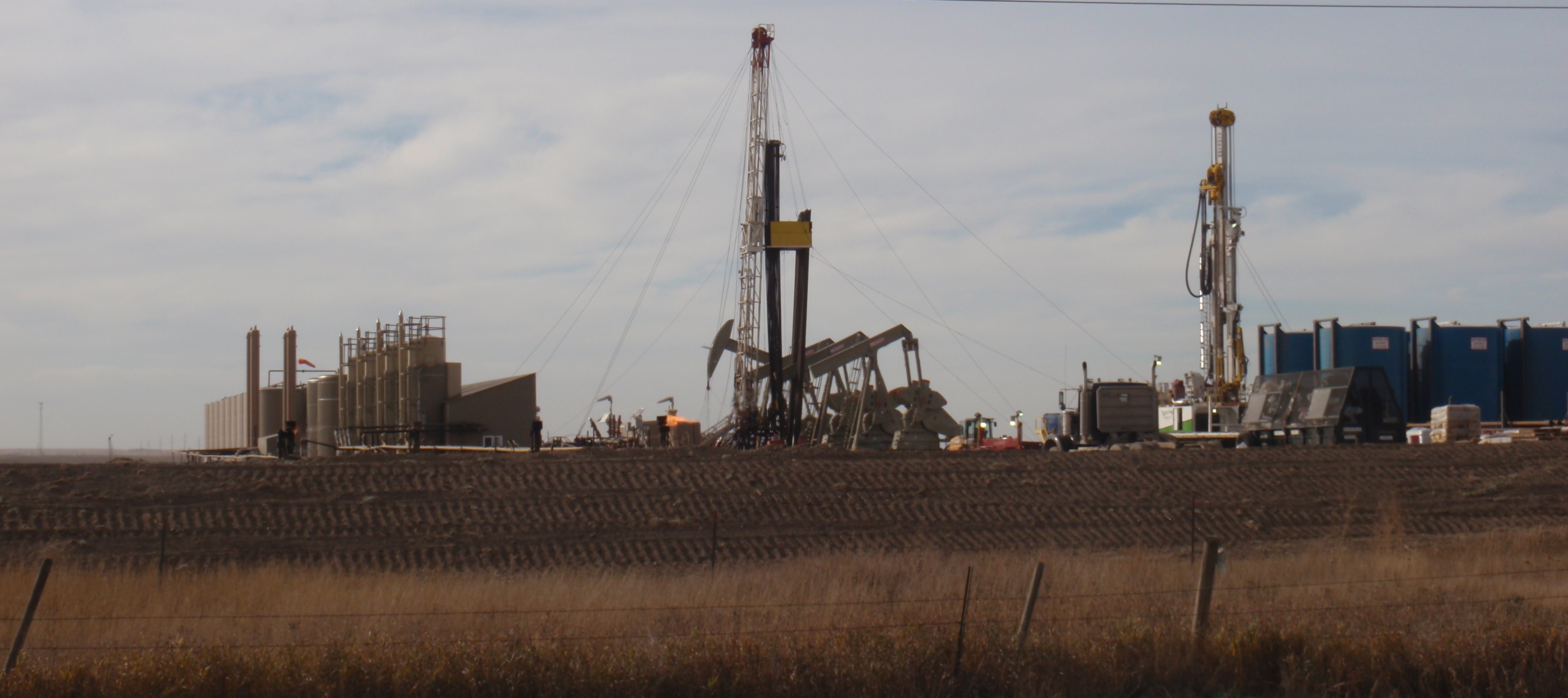(photo by James Ulvog. If my city boy eyes are working right, there are 4 pumps, two of which are producing, along with a drilling rig and a workover rig on that one pad. Can you find 48 million dollars and 6 million barrels of oil in the picture?)
A few more articles that I found interesting on what’s going on in the rockin’ Bakken:
12/9 – Wall Street Journal – North Dakota Energy Regulator Mandates Steps to Reduce Oil Volatility– NDIC issued rules requiring oil be treated to reduce vapor pressure to 13.7 psi. Excess gas will be burned off by heater-treaters heating the crude to 110 degrees.
12/9 – Reuters in Bakken.com – North Dakota to require every barrel of crude oil be filtered – The treatment will remove propane, butane and the other volatile natural gas liquids, which are called NGLs. Vapor pressure of 13.7 psi is just higher than gasoline at 13.5 psi.
The rules will not specify what equipment, techniques, or location (wellhead, loading terminal, or some other place) must be used, so long as the vapor pressure gets down to 13.7. How refreshing. Regulators specifying the goal instead of telling what color pencil to use, how to hold it, and the required length.
12/2 – Million Dollar Way – Home Depot Coming to Williston? – Zoning approved for 110,000 square foot Home Depot on west side of town.
12/10 – Dickinson Press – Williston strip clubs lose liquor license for 60 days – Both of the strip clubs on south Main will not be selling booze, again, starting December 10. At the last hearing eighteen months ago, the police reported 120 service calls in 3 years. Since then the number of call is up about 50% to 189 in half the time. That’s a three-fold increase in rate of police calls from one in about 9 days to one visit in about 3 days.
For the heavy drinkers, there are still plenty of places to go in Williston to get plastered.
12/13 – Say Anything Blog – Time For Oil Boom Critics To Give Some Credit On Flaring – Portion of gas flared in North Dakota has been dropping rapidly during 2014. A spike over last winter was due to a gas processing plant being down. Article has a great graph of the percent flared since early 2012. Sharp drop is quite visible.
The producers in the state met the mandated amount in October.
Another graph shows that while the amount of gas produced is on a huge growth curve, the volume of gas flared has hit a plateau and is actually falling.
Mr. Port’s rather pointed conclusion:
What’s sad, bordering on pathetic, is that neither North Dakota’s regulators nor the oil industry will get much in the way of credit for this accomplishment, remarkable as it is. The complainers who, let’s face it, are more concerned with stopping fossil fuel development than safe and responsible production have already moved on to the next talking point.
